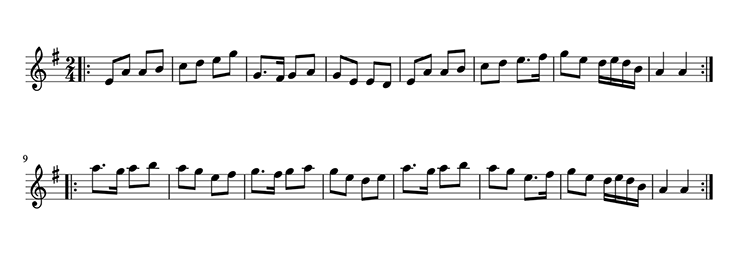
HOSTS- Jeremy Burns, Matthew Scott Phillips
TYPE- Theory
DURATION- 79:57
BUMPER MUSIC- "Sicilia" (Matthew Scott Phillips)
ANNOUNCER- Mike Cunliffe
When you learn or write a melody, you may want to add some harmonic textures to it. In this episode, we will learn a melody. We will write harmonies that move along with it in parallel motion. We will then find the chords that suit it best. Get ready to know harmony better!
MELODY- A succession or arrangement of notes forming a distinctive sequence or theme, often repeated or revisited through out the piece. This is the horizontal aspect of music.
CONTOUR- With respect to the melody, this is the over all shape. It will often feature what appear to be peaks and valleys, as the melody ascends, and/or descends.
SCALE- A pattern of notes, arranged in whole steps and half steps, that span an octave.
TONIC- The root or foundation of a key or scale. This is scale degree 1. The ultimate directional goal of harmony.
HARMONY- Occurs when two or more notes occupy the same space in time. This is the vertical aspect of music.
INTERVAL- The difference in pitch between two notes.
TRIAD- A basic three note harmony consisting of the root, the 3rd and the 5th of the scale. There are 4 main types of triads: major, minor, augmented and diminished.
CHORD- Any combination of three or more notes that occupy the same space in time.
START WITH A MELODY
"SICILIA"
(Matthew Scott Phillips)


-If we draw a line (connecting the dots), from one note to the next, it will reveal the CONTOUR of the melody, as seen below.

-Now let's add a melody that occupies the same rhythms and contour, but starts a 3rd (in this case M3) ABOVE the melody. We will start on the G note (scale degree 5) and follow the melody, in parallel motion, while maintaining this distance of a 3rd. Notice this is all DIATONIC. We are using only the notes that fall within the key of C minor. This new melody, when played in conjunction with the original melody, creates a HARMONY, as seen below.

-If we draw a line (connecting the dots), from one note to the next, it will reveal the CONTOUR of the harmony of a 3rd above. You can see, and hear, how closely it follows the CONTOUR of the melody.

-Now let's add a melody that occupies the same rhythms and contour, but starts a 3rd (in this case m3) BELOW the melody. We will start on the C note (scale degree 1) and follow the melody, in parallel motion, while maintaining this distance of a 3rd. Again, notice this is all DIATONIC. We are using only the notes that fall within the key of C minor. This new melody, when played in conjunction with the original melody, creates another HARMONY, as seen below.

-If we draw a line (connecting the dots), from one note to the next, it will reveal the CONTOUR of the harmony of a 3rd below. You can see, and hear, how closely it follows the CONTOUR of the melody.

-Finally, when we put them all together, you can see this harmony in motion. See how closely the upper and lower harmonies follow the melody.

-Now let's make chords out of these harmonies. We have 3 voices. So we should be able to produce triads. Above the score, you will see the chords we built and below the score, you will see the harmonic progression represented by the diatonic chords. All of these triads are built in root position.



CHOOSING CHORDS, BASED ON THE
NOTES IN THE MELODY
"THE BALLYDESMOND POLKA #2"
(traditional)
-This upbeat polka (2/4 time) has a few more notes per measure than the previous example. So we're going to look at each measure and find the chords that best fit (also paying mind to the genre of Celtic music and what we know of it). Don't be fooled by the key signature. 1# would often imply E minor or G major. However, when we play the melody, we here it moving up and down the A Dorian scale and it resolves on an A note. We are in the key of A dorian! See below the full tune, with the A section on the top and the B section on the bottom.

-Let's look at the first 4 measures of the A section:
-Notice that most of these notes fit within the A minor chord or the G major chord. The only exception is the sixteenth note F# in m.3. But it happens so fast, it's not terribly influential on the harmonic texture. We used these chords because in Dorian, just as in minor, the VII chord often takes the DOMINANT function. Hence, we use G major instead of E minor.
-Measures 1 and 2 have a heavy presence of notes from the A minor chord and they all land on strong beats. So we feel pretty good about using A minor for these two measures!
-Measures 3 and 4 feature more notes from the G major chord and they all occupy the strong beats. Let's use G major for those two measures!

-Below, we see how measures 5 and 6 are repeats of measures 1 and 2. So, for now, we'll use the same chords. In measure 7, we were torn between G major and E minor (they both have the notes G and B in common). But ultimately, and keeping true to the genre, we stuck with G major.

-Here is the entire A section with the chords we choose on top and other potential chords on the bottom. These potential substitutions are not the only possibilities but they do each share 2 common tones with the chords we ultimately picked. They are therefore stronger candidates.

-Apply the previous exercises and finish out the tune with your own ideas!

